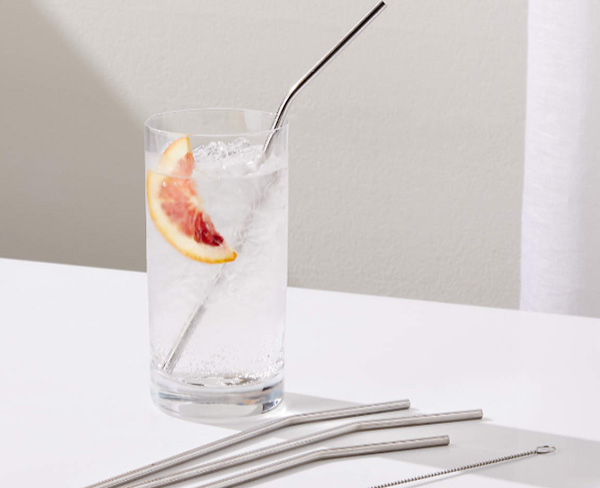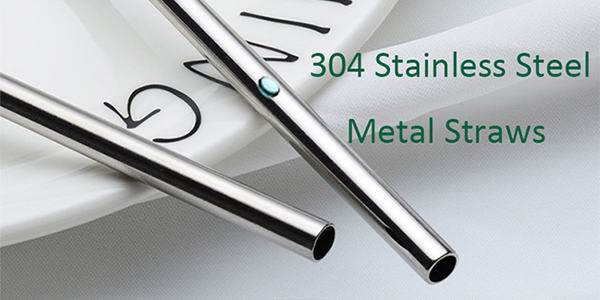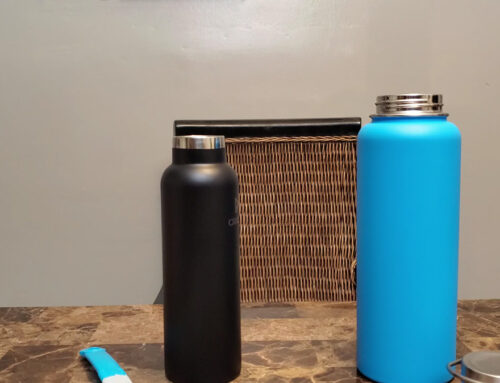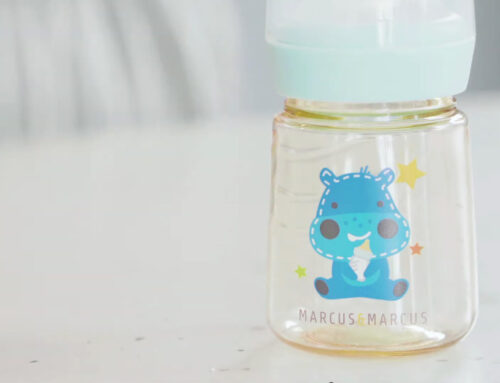Contents
- 1. What is straw?
- 2. How many types straws are on the market?
- 3. What is stainless steel straw?
- 4. What is 304 stainless steel?
- 5. What are the benefits of 304 stainless steel straws?
- 6. What are the disadvantages of 304 stainless steel straws?
- 7. Is 304 stainless steel straw safe?
- 8. What are the cautions while using stainless steel straws?
- 9. FAQ – What else do you want to know about 304 stainless steel straws?
9.1 What kind of drinks can stainless steel straws be used for?
9.2 Are stainless easy to get rust?
9.3 Are stainless steel straws easy to clean?
9.4 Can stainless steel be put in the dishwasher?
9.5 Where to buy stainless steel straws?
1. What is straw?
A straw is a hollow, typically made of plastic or paper, used for drawing a beverage from a container into the mouth. Straws are commonly used in restaurants, cafes, fast food outlets, and homes. While straws are convenient to use, their material is mostly non-biodegradable and harmful to the environment, which is why some areas have banned or restricted their use.
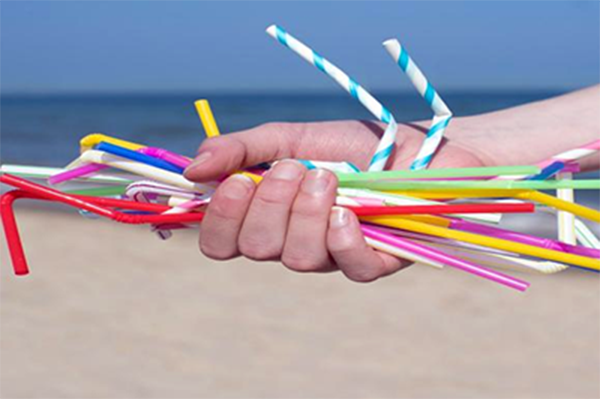
2. How many types straws are on the market?
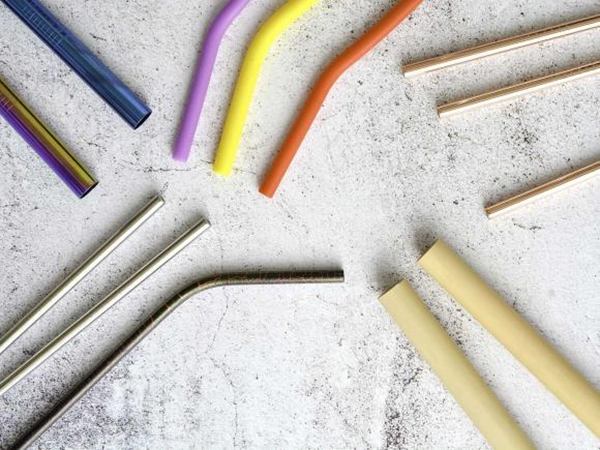
Many materials can be used for producing straws, like glass, metal, plastic or paper. Customers or beverage merchants usually select straws based on their own preferences and needs. Then we’ll show you straws widely seen in our daily life as follows:
- Plastic: Most plastic straws are made from polypropylene, a type of plastic that is cheap, lightweight, and durable. However, plastic straws are non-biodegradable and can take hundreds of years to decompose, leading to environmental pollution.
- Paper: Paper straws are made from paper pulp and are biodegradable and compostable. They are a popular eco-friendly alternative to plastic straws.
- Metal: Metal straws are typically made from stainless steel, titanium, or aluminum. They are reusable, durable, and can last for years. However, they can be expensive and may not be suitable for people with metal allergies.
- Glass: Glass straws are made of tempered glass, which is durable and safe to use. They are easy to clean and can be reused many times. However, they can be fragile and breakable.
- Silicone: Silicone straws are made from food-grade silicone, which is soft, flexible, and durable. They are easy to clean and can be reused many times. However, they may not be suitable for hot beverages as they can melt.
- Bamboo: Bamboo straws are made from bamboo, a sustainable and renewable resource. They are biodegradable and compostable, making them an eco-friendly alternative to plastic straws.
3. What is stainless steel straw?
A stainless steel straw is a reusable straw made of high-quality stainless steel, which is a type of alloy that contains chromium and other metals. Stainless steel straws can be a great replacement for plastic straws because they are durable, reusable, and can last for years. They are also easy to clean and maintain.
Stainless steel straws come in various sizes, shapes, and designs. Some have a straight shape, while others have a bend, similar to plastic straws. They can also come with different widths, such as regular or wide, to accommodate different types of beverages. Additionally, some stainless steel straws come with a silicone or rubber tip to protect the teeth and lips.
4. What is 304 stainless steel?

Straws belong to food appliance, which has a direct impact on our health. So the stainless steel straws on the market must be made by food-grade stainless steel like 304 stainless steel.
304 stainless steel(18/8) is a type of austenitic stainless steel, which is the most common and widely used type of stainless steel. It is composed of 18% chromium and 8% nickel, with a small amount of carbon and manganese. The “304” in the name refers to the grade of steel, which indicates the composition and properties of the material.
304 stainless steel is known for its excellent corrosion resistance, high durability, and good strength. It is also resistant to heat, oxidation, and scaling at high temperatures. These properties make it a popular choice for a wide range of applications, including food processing, chemical processing, and medical devices.
In addition to its corrosion resistance and durability, 304 stainless steel is also easy to clean and maintain. It can be polished to a high shine and is resistant to staining, making it an ideal material for kitchen appliances and cookware.
5. What are the benefits of 304 stainless steel straws?
Why do more and more people tend to use 304 stainless steel straws? Here are some pros for such straws:
- Durability: 304 stainless steel is a strong and durable material that can withstand regular use and last for years. This makes it a great alternative to single-use plastic straws that can quickly break or become damaged.
- Easy to clean: Stainless steel straws are easy to clean and maintain. They can be washed by hand or in the dishwasher, and are resistant to rust, corrosion, and staining.
- Eco-friendly: Stainless steel straws are reusable, making them a more eco-friendly option than single-use plastic straws that contribute to plastic pollution.
- Safe for use: Stainless steel straws are made from food-grade material that is safe for use with food and beverages. They do not contain harmful chemicals or toxins that can leach into your drinks.
- Versatile: Stainless steel straws come in a variety of sizes and shapes, including straight and bent designs, and can be used with a wide range of beverages, including hot and cold drinks.
- Cost-effective: While stainless steel straws may have a higher upfront cost than disposable plastic straws, they are a more cost-effective option in the long run because they can be reused multiple times.
6. What are the disadvantages of 304 stainless steel straws?
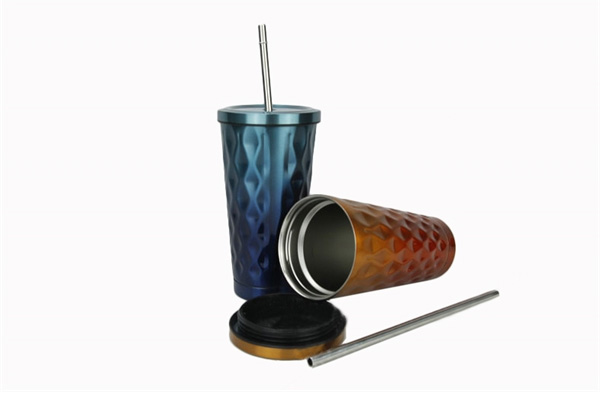
Never spend blindly! Rational cost is necessary. To achieve this goal, we need to know about the cons of a product at the same time and buy what we really need.
- Conducts heat: Stainless steel is a good conductor of heat, which means that metal straws can become hot when used with hot drinks. This can be uncomfortable or even dangerous if the straw is too hot to touch.
- Hardness: Stainless steel straws are harder than plastic straws and may cause discomfort if accidentally bitten or chewed. This is especially true for people with sensitive teeth or children who may not be used to metal straws.
- Weight: Stainless steel straws are heavier than plastic straws and may not be as convenient to carry around, especially if you are traveling or on-the-go.
- Taste: Some people may notice a metallic taste when drinking from stainless steel straws, especially if the straw is not properly cleaned or maintained.
- Cost: While stainless steel straws are cost-effective in the long run, they do have a higher upfront cost than disposable plastic straws.
7. Are 304 stainless steel straws really safe?

Generally speaking, 304 stainless steel straws are generally safe while using with food and beverages. This is because they are made from food-grade stainless steel, which is a non-toxic material that does not contain harmful chemicals or toxins that can leach into your drinks.
In addition, 304 stainless steel is a high-quality and durable material that is resistant to rust, corrosion, and staining. This means that it will not break down or degrade over time, making it a safe and reliable option for regular use.
However, it is important to note that proper use and maintenance of stainless steel straws is essential to ensure their safety. This includes regularly cleaning the straws with a cleaning brush to remove any buildup or residue, and inspecting the straws for any signs of damage or wear.
It is also important to be cautious when using stainless steel straws with hot drinks, as the metal can conduct heat and cause the straw to become hot to the touch. To avoid this, you can use a silicone or other heat-resistant straw tip or wait for your drink to cool down before using the straw.
8. What are the cautions while using stainless steel straws?
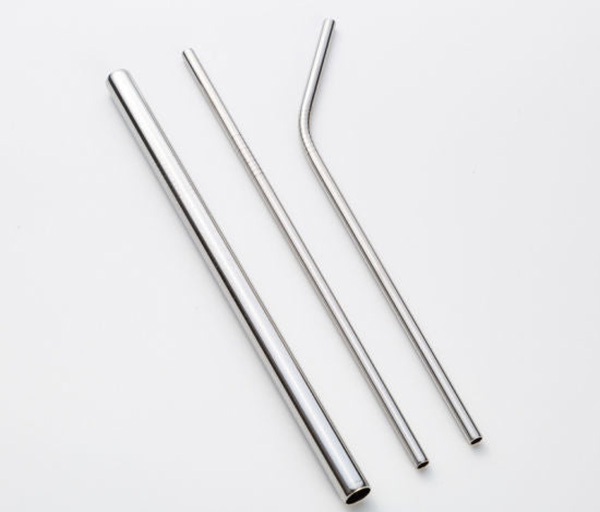
While stainless steel straws are generally safe for use, there are a few cautions to keep in mind to ensure proper use and maintenance. Now you can follow KingStar to take a look at these cautions:
- Temperature: Stainless steel is a good conductor of heat, so be cautious when using metal straws with hot drinks. The straw can become hot to the touch and potentially cause burns or discomfort.
- Biting or chewing: Stainless steel straws are harder than plastic straws and may cause discomfort if accidentally bitten or chewed. This is especially true for people with sensitive teeth or children who may not be used to metal straws.
- Cleaning: It is important to clean your stainless steel straws thoroughly after each use to prevent bacteria or residue buildup. Use a cleaning brush and warm, soapy water or a vinegar and water solution to clean the straw, and allow it to air dry.
- Timely check: Regularly inspect your stainless steel straws for any signs of damage or wear, such as cracks, chips, or rust. If the straw is damaged, it should be replaced.
- Storage: Store your stainless steel straws in a clean, dry place to prevent bacteria or mold growth. You can also use a carrying case or pouch for easy transportation.
By following these cautions, you can ensure safe and effective use of your stainless steel straws and enjoy the many benefits of this eco-friendly and sustainable alternative to single-use plastic straws.
9. FAQ – What else do you want to know about 304 stainless steel straws?
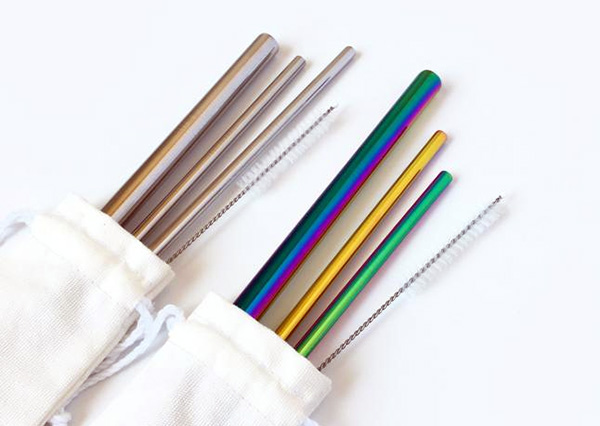
Never spend blindly! Rational cost is necessary. To achieve this goal, we need to know about the cons of a product at the same time and buy what we really need.
- Conducts heat: Stainless steel is a good conductor of heat, which means that metal straws can become hot when used with hot drinks. This can be uncomfortable or even dangerous if the straw is too hot to touch.
- Hardness: Stainless steel straws are harder than plastic straws and may cause discomfort if accidentally bitten or chewed. This is especially true for people with sensitive teeth or children who may not be used to metal straws.
- Weight: Stainless steel straws are heavier than plastic straws and may not be as convenient to carry around, especially if you are traveling or on-the-go.
- Taste: Some people may notice a metallic taste when drinking from stainless steel straws, especially if the straw is not properly cleaned or maintained.
- Cost: While stainless steel straws are cost-effective in the long run, they do have a higher upfront cost than disposable plastic straws.
9.1 What kind of drinks can stainless steel straws be used for?
304 stainless steel straws are reusable, commonly used for diverse beverages.
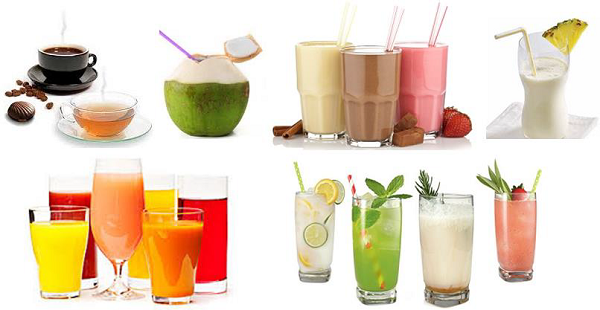
Yogurts and smoothies
Wide stainless steel straws can provide an improved drinking experience as they have a larger circumference compared to regular straws. This wider diameter allows for smoother sipping and enhances the enjoyment of using a straw. Moreover, the temperature of the drink should not pose any concern since it is usually consumed at room temperature, which does not affect the performance of the stainless steel straw.
Custard
Although this dessert contains solid materials, the best way to enjoy the molten part is by using a straw. Due to its thickness, a wide metallic straw is recommended to ensure optimal flow. While a spoon may be the conventional tool, using a metallic straw can be a unique and exciting experience for food enthusiasts.
Iced tea and coffee
Bent stainless steel straws are ideal for sipping these beverages. As the drinks are served cold, the straws maintain a comfortable temperature while you ap easily.
Milk shake
This beverage, which has gained widespread popularity, is also enjoyable when sipped through a straw. Due to its thickness, it is recommended to use a wide metallic straw that allows for a slower and more satisfying flow of your favorite drink.
Fruit juices
Chilled fruit juice tastes best when sipped through a straw, and a metallic stainless straw is a great option to consider. Using this type of straw can provide a unique and exciting experience compared to other types of straws you may have used before.
9.2 Are stainless easy to get rust?
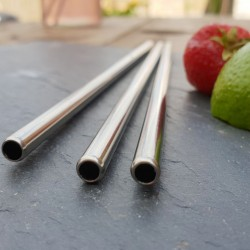
Stainless steel is known for its corrosion-resistant properties, but it is not completely impervious to rust. Under certain conditions, such as prolonged exposure to high humidity, saltwater, or certain chemicals, stainless steel can still rust. However, compared to other metals, stainless steel is much less prone to rusting. The grade of stainless steel used can also impact its resistance to rust.
For example, 304 stainless steel is more resistant to rust than 316 stainless steel. Proper care and maintenance, such as regular cleaning and drying, can also help prevent rusting of stainless steel. Proper care and maintenance of stainless steel straws include the following:
- Cleaning: Stainless steel straws should be cleaned thoroughly after each use. They can be washed by hand with soap and warm water or placed in a dishwasher.
- Drying: After washing, the straws should be dried completely to prevent water spots and corrosion. Use a towel or let them air dry.
- Storage: Stainless steel straws should be stored in a dry place. If they are left in a damp or humid environment, they are more likely to develop rust.
- Avoiding abrasive cleaners: To avoid scratches and damage, it is recommended to avoid using abrasive cleaners or scrubbers on stainless steel straws.
By following these simple care and maintenance practices, you can ensure that your stainless steel straws stay in good condition and last longer.
9.3 Are 304 stainless steel straws easy to clean?
Of course, 304 stainless steel straws are generally easy to clean. They can be washed by hand using soap and warm water, or they can be placed in the dishwasher for cleaning. Stainless steel is also a non-porous material, which means that it does not absorb food or drink particles, making it easier to clean than some other materials.
Additionally, stainless steel is highly durable and can withstand repeated washing without becoming damaged or losing its shine. However, some stainless steel straws come with narrow or bent shapes, which can make cleaning a bit more challenging. In such cases, using a cleaning brush specifically designed for straws can be helpful.
9.4 Can 304 stainless steel be put in the dishwasher?
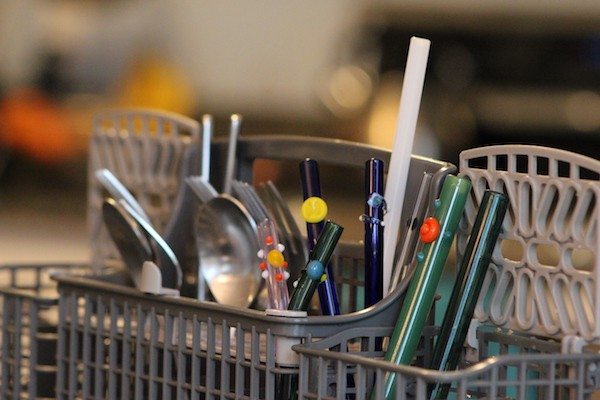
Generally speaking, 304 stainless steel is a highly durable and corrosion-resistant material that can withstand the high temperatures and water pressure of most dishwashers without becoming damaged or losing its shine.
However, as with all stainless steel, it is important to use a dishwasher detergent that is safe for use with stainless steel, as some detergents contain harsh chemicals or high levels of chlorine, which can cause discoloration or rusting over time.
Additionally, it is recommended to avoid mixing stainless steel items with other metal objects in the dishwasher, as this can cause a chemical reaction that can lead to corrosion.
9.5 Where to buy stainless steel straws?
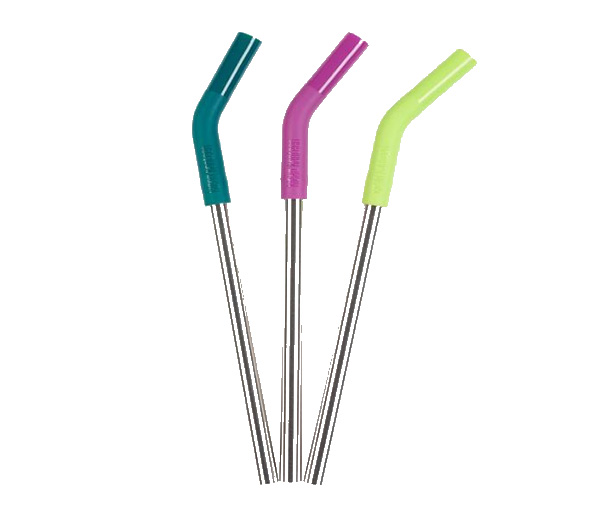
If you don’t know where you can purchase reliable stainless steel straws, KingStar is the best choice.
As a leading wholesale custom stainless straw manufacturer, KingStar offers a wide range of stainless steel straws that are perfect for any occasion. Whether you’re looking for a set of straws for your home, or you’re looking to stock up on straws for your business, we’ve got you covered.
Our straws are made from high-quality 304 stainless steel, which is durable, corrosion-resistant, and safe for use with all types of beverages. They come in a variety of sizes, including straight and bent straws, as well as a range of fun colors and designs.
In addition to being stylish and durable, our straws are also eco-friendly. By using our reusable stainless steel straws instead of disposable plastic ones, you’ll be doing your part to reduce waste and protect the environment. If you want more information, please contact us!


